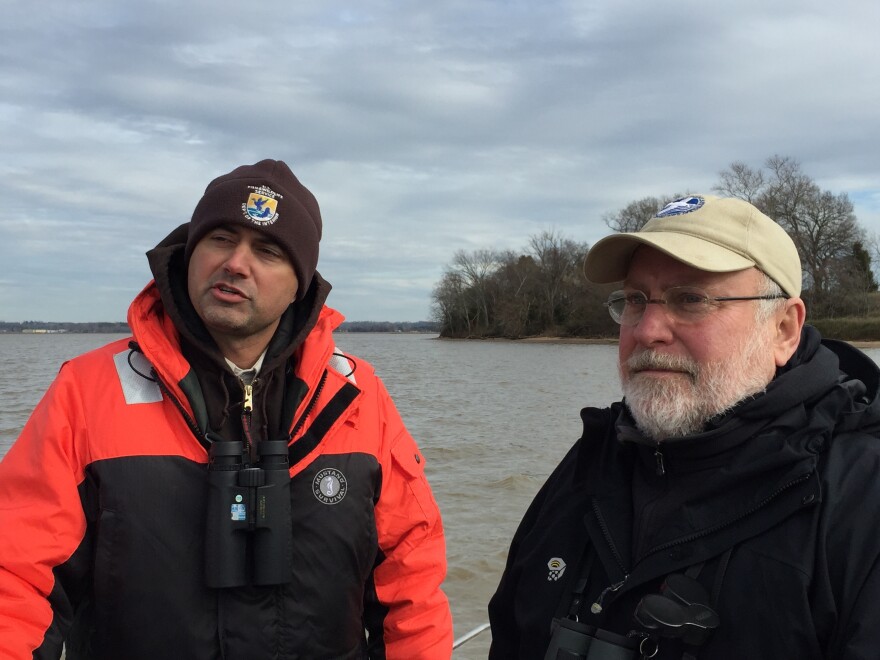Bald eagles are a more common sight in Virginia, but a decade after being delisted as endangered, biologists are still keeping a close watch on their numbers and on new threats.
In January, Pamela D'Angelo went on one of several mid-winter eagle counts, this one a 35 mile route along on the Rappahannock River where 192 eagles were logged.
Just after sunrise in Tappahannock, Bill Portlock, with the Chesapeake Bay Foundation and Bill Crouch, with the U.S. Fish and Wildlife Service begin counting eagles. Portlock originated the state count back in 1987.
"As the rivers in the north freeze, ducks migrate south and eagles follow them," Portlock says. "So we start seeing a population increase generally around November and December, peaking in January, February and then the birds will leave returning back to their areas for reproduction."
The Rappahannock River has a particular draw for migrating eagles. It seldom ices over, has cliffs and older trees to perch from, and there are plenty of ducks, geese and invasive blue catfish, an eagle favorite. Today's count will go to the Army Corps of Engineers nationwide survey.
"There are teams of biologists out over a two week period for one day covering areas that are known concentrations for bald eagles," says Portlock.
The Rappahannock River winds along several parks and refuges. Bill Crouch helps manage the Rappahannock River Wildlife Refuge.
"It's important to protect the areas where they breed but it's also important to protect the areas where they migrate to and from and those lands in between. That's one of the things this refuge provides," he says.
Banning the chemical pesticide DDT and listing eagles led to their comeback.
But Bryan Watts, director of the Center for Conservation Biology of the College of William & Mary and VCU says biologists in the Chesapeake Bay area have new concerns.
"Rises in mercury, rises in lead levels. There are still some concerns about fire retardants," Watts says. "There are some new concerns about pharmaceuticals. These are drugs that we take and they go through our system into the sewage treatment but are passed through. So they are released into the estuary."

Watts and others remain optimistic.
"Eagles are adapting to our presence and they are moving increasingly into urban areas," he says. "The hope is over time that we can cohabitate and voluntarily not disturb them."
Now through February is the best time to go eagle spotting, at the Rappahannock River Wildlife Refuge, in the upper James River and the upper Potomac River, particularly Mason Neck and Belmont Bay. You may even hear them talk back and forth.
The Corps will publish results later this year.

